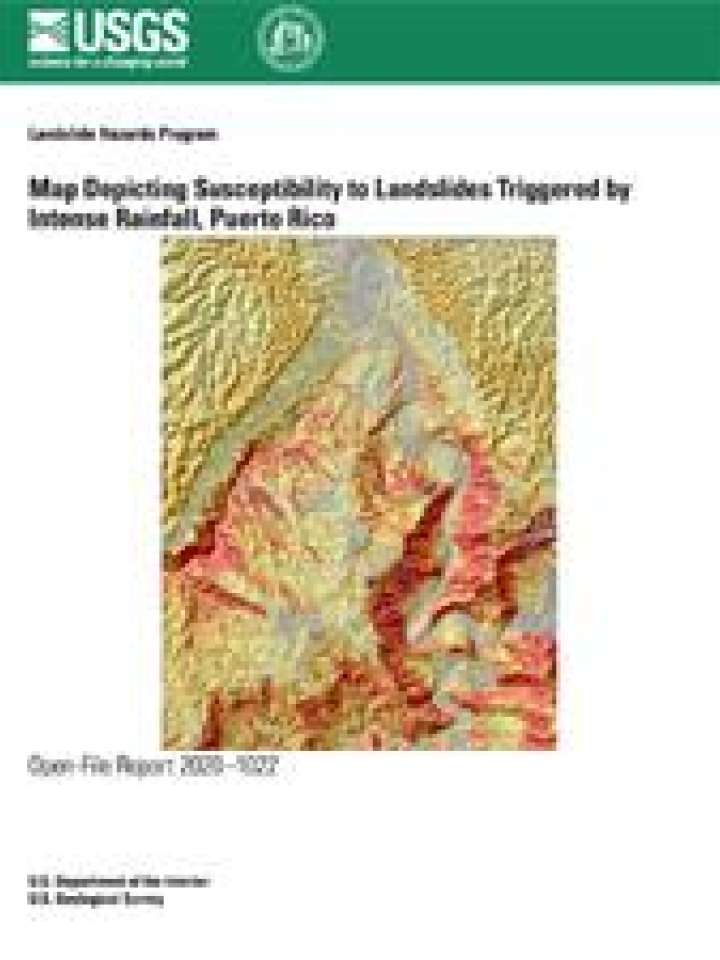Map depicting susceptibility to landslides triggered by intense rainfall, Puerto Rico
Landslides in Puerto Rico range from nuisances to deadly events. Centuries of agricultural and urban modification of the landscape have perturbed many already unstable hillsides on the tropical island. One of the main triggers of mass wasting on the island is the high-intensity rainfall that is associated with tropical atmospheric systems. Puerto Rico’s geographic position and rugged topography render millions of residents vulnerable to widespread landslide events. In this study, a high-resolution (5 meters), high-intensity rainfall-induced landslide susceptibility model was produced using the frequency-ratio method. Datasets utilized in the model included a complete-island landslide inventory created from imagery obtained after Hurricanes Irma and María impacted the island during September 2017, slope inclination, land-surface curvature, soil type, geologic terrane, mean annual precipitation, land use, soil moisture, and distance to roadways and streams. The final data product (plate 1) is a statistically viable representation of where landslides are likely to initiate during or soon after intense rainfall, with a robust receiver operating characteristic area-under-curve value of 0.87. The model output raster pixel values were binned into 100 equal-area quantiles and then classified into Low, Moderate, High, Very High, and Extremely High classes of susceptibility. The Extremely High susceptibility classification represents the most vulnerable 1 percent of the island, whereas Very High, High, Moderate, and Low classifications cover 9, 20, 30, and 40 percent of the island, respectively. The susceptibility map is intended to assist in planning future development, mitigation measures, and post-event emergency response; however, it is not a substitute for site-specific, slope-stability assessments performed by licensed geologists and engineers. Additionally, the map does not portray locations where landslide material may travel after mobilization, and which may be at extreme risk; nor does it necessarily portray where landslides may occur during earthquakes or mass wasting triggered by prolonged, relatively low-intensity rainfall.
Explore further
